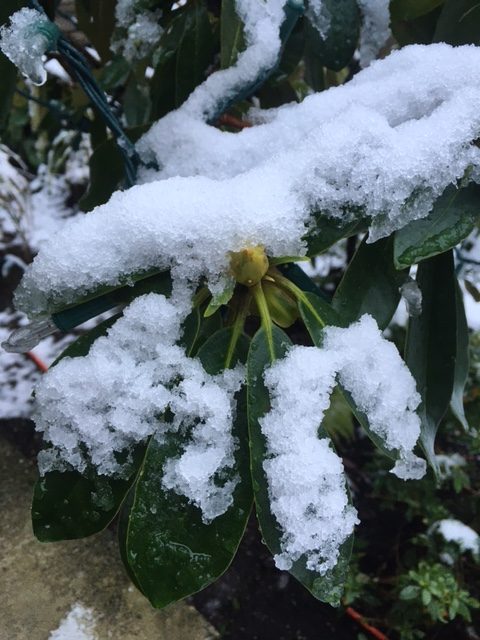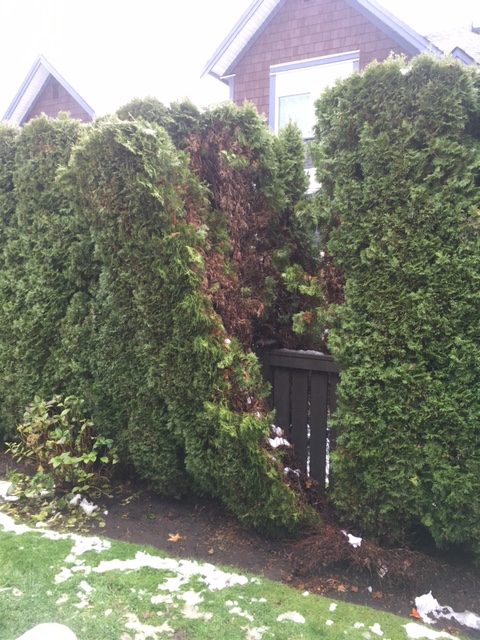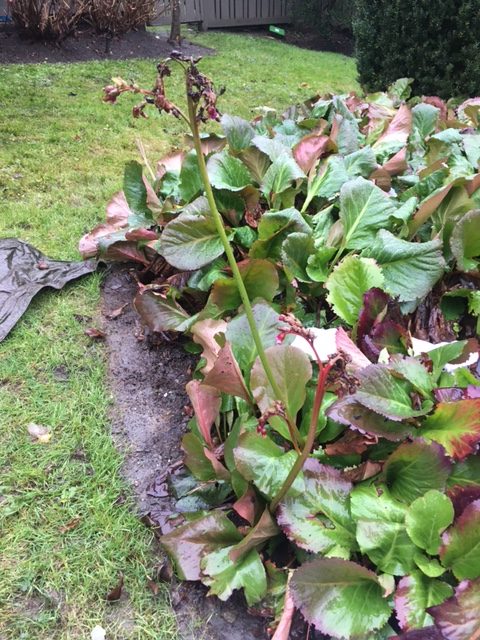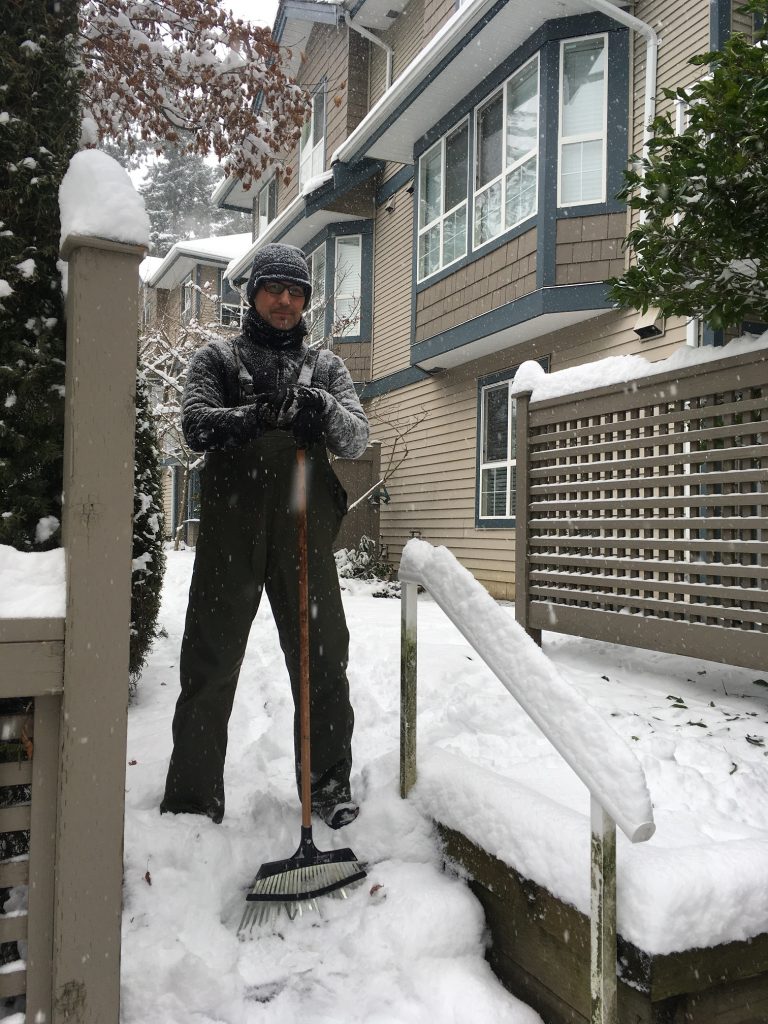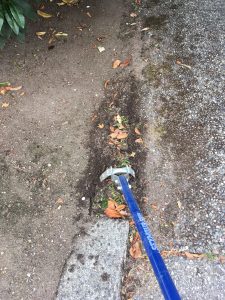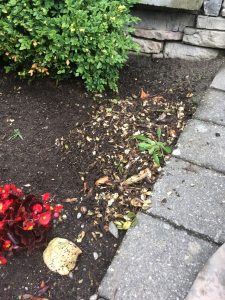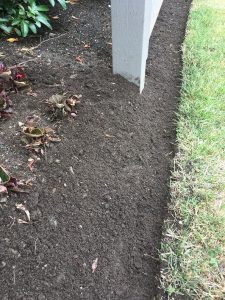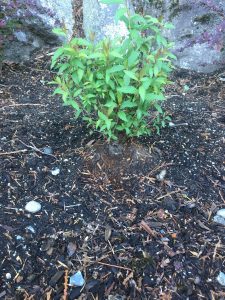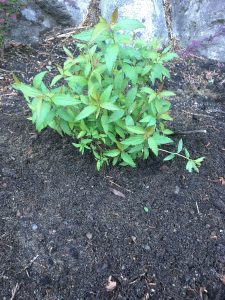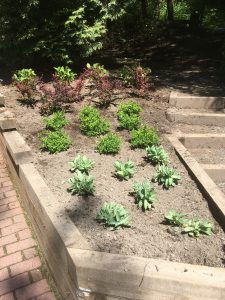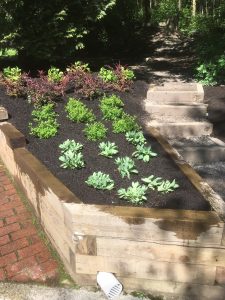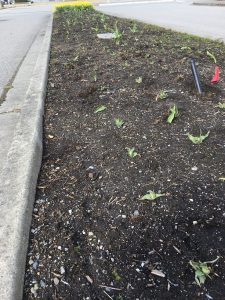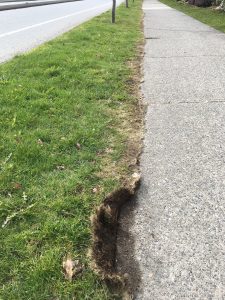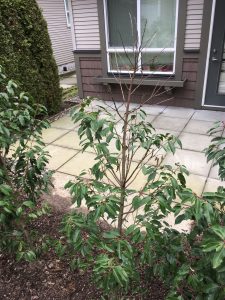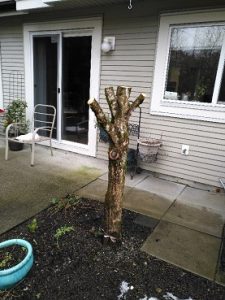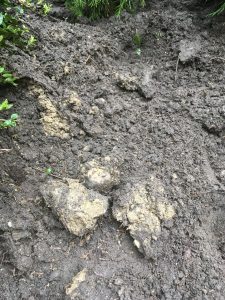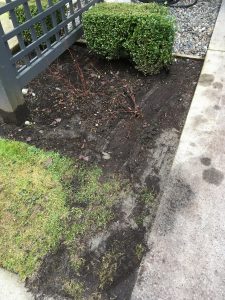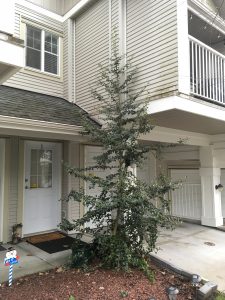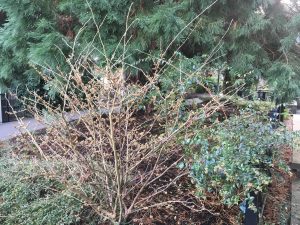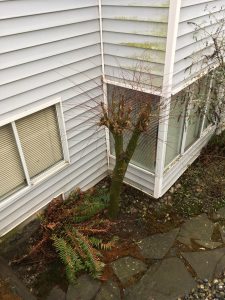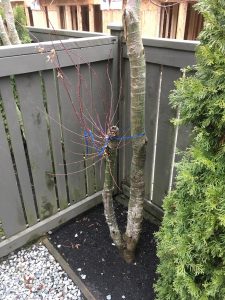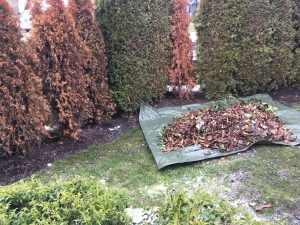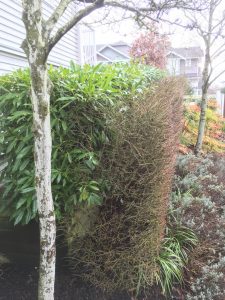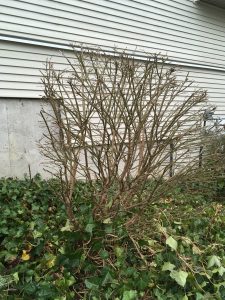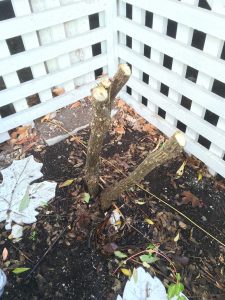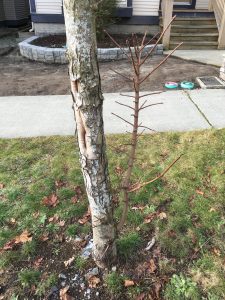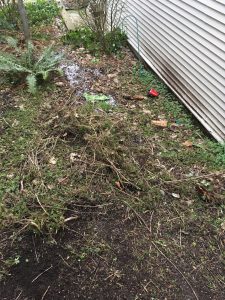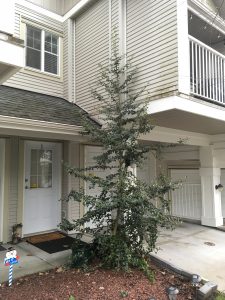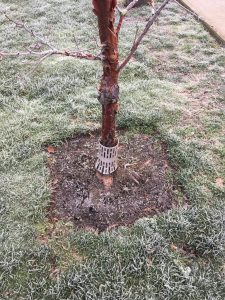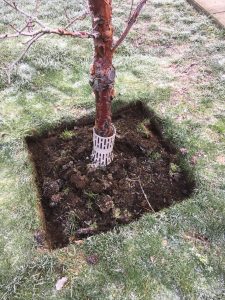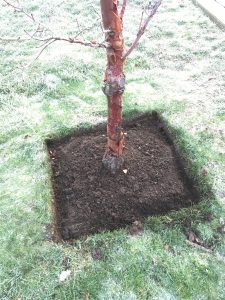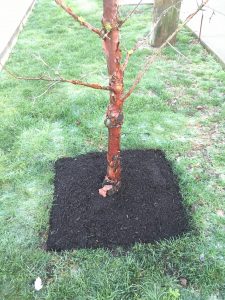Always training
I really enjoy training new landscapers. New immigrants are even more challenging because their English skills aren’t that great. Luckily, my new coworker from Turkey is an university-trained forestry engineer with decent English.
After the current Turkish leader survived a coup attempt some years ago, he cleaned-up and jailed many people, including my coworker’s sister. So my Turkish friend had to move to Canada to avoid problems, but his family stayed behind. Not seeing them must be a constant source of stress. Now, back to landscaping.
Landscape eye
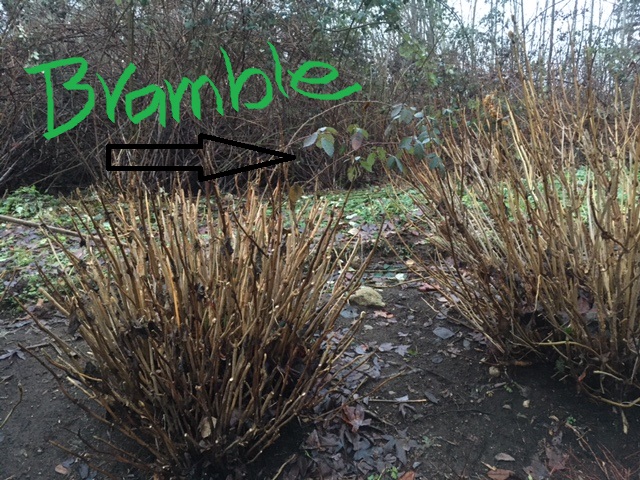
Landscape eye is a critical skill you develop over time as you work in the landscape. Here my Turkish apprentice passed with flying colors by identifying the prickly bramble sticking out of a hydrangea. Then he removed it with his snips.
You must be able to spot blemishes in the landscape and correct them. Moving through the day like a robot doesn’t work. We must constantly scan the landscape to make sure it’s beautiful and healthy.
Plant ID
As a forestry engineer, my Turkish friend isn’t new to plant identification. Just our landscape plants are new to him. Here the prickly shrub looks like a holly (Ilex) but it’s actually Osmanthus.
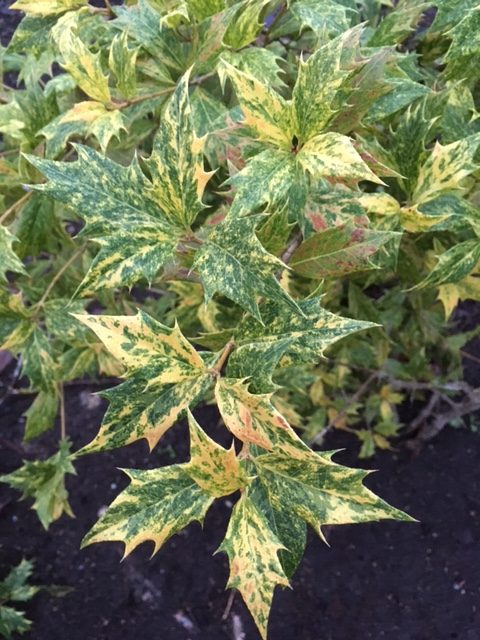
Broken branches
I believe it was my Turkish friend who looked up first and spotted the broken branch. He couldn’t remember the full botanical name of the tree but he tried. It’s a sweetgum or Liquidambar styraciflua. We have lots of them in the landscape because they’re an excellent alternative to maples (Acer spp.)
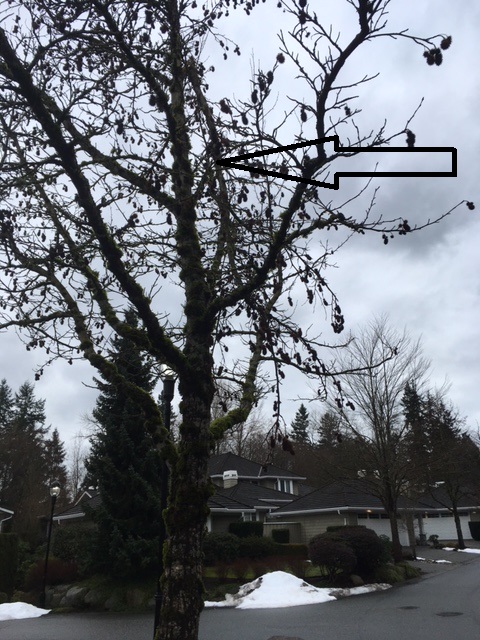
Learning by doing next to me is the best way to train new apprentices. So, I sent my Turkish helper back to the truck to get two pole pruners with a saw attachment. He was able to just reach the branch without a ladder.
When we got the branch safely on the ground, I had to remind my apprentice to remove the remaining stub. Not only is it ugly, it can also allow diseases to get into the tree. Later, when he tried to tell me about his burning arms, I knew what he meant. I’ve taken down enough tree branches to know it requires physical strength. An apprentices with burning arms is music to my ears.
Red Seal effect
Now, I know some people laugh at the idea of Red Seal effect. The effect of me training new hires to become great landscapers. Incredibly, I have my share of haters and I’ve made fun of them in a recent blog. Having haters is actually a great sign, so just ignore them and keep doing the same great work.
Simply put, it works. Apprentices spend the day working with me so we get to work and talk together. When I see mistakes, I correct them immediately; and I answer all questions to the best of my ability. I suspect my Turkish helper will never again walk away from a branch stub. He’ll remove it like a pro. Thanks to the Red Seal effect.


